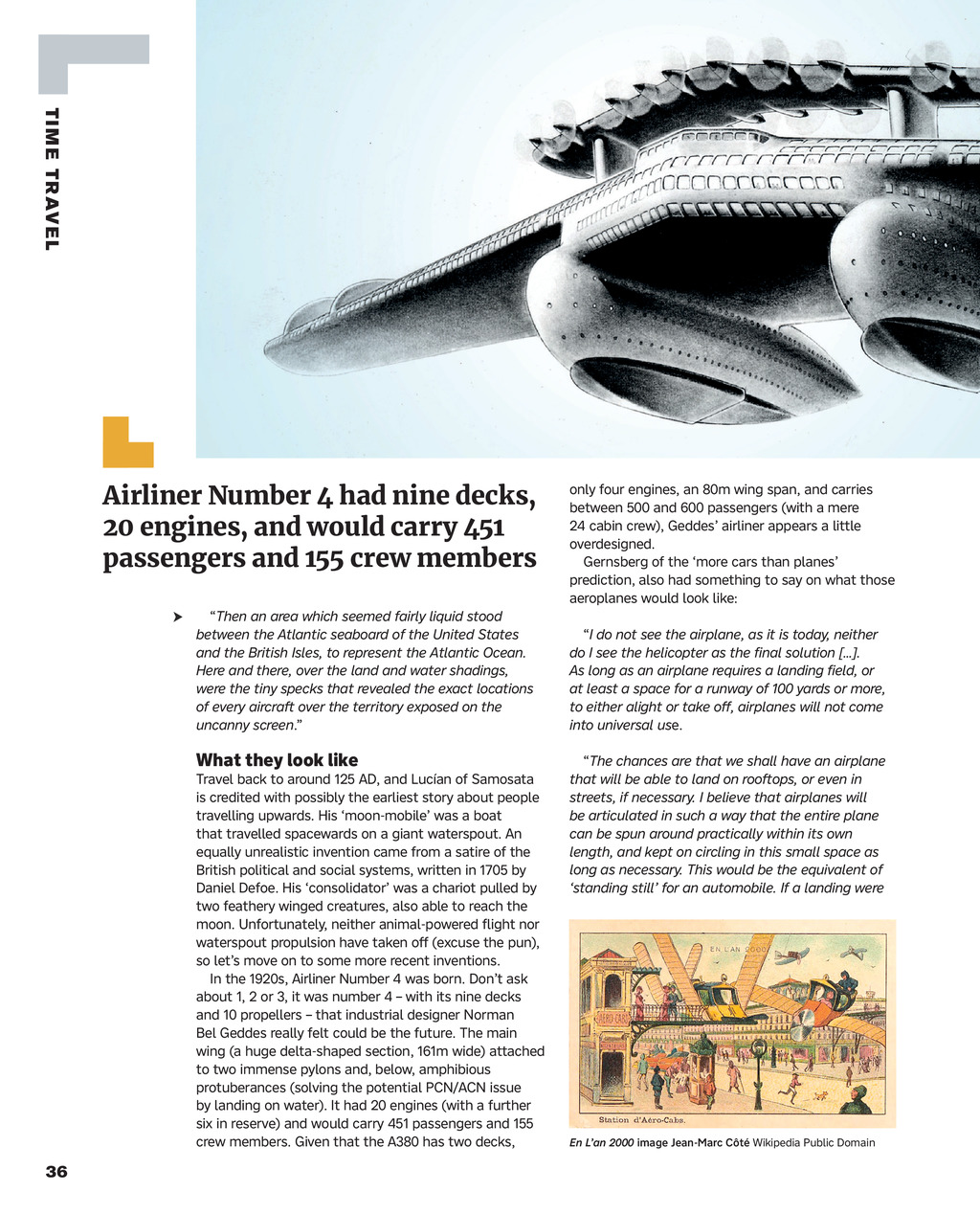




T I M E T R AV E L Airliner Number 4 had nine decks, 20 engines, and would carry 451 passengers and 155 crew members Then an area which seemed fairly liquid stood between the Atlantic seaboard of the United States and the British Isles, to represent the Atlantic Ocean. Here and there, over the land and water shadings, were the tiny specks that revealed the exact locations of every aircraft over the territory exposed on the uncanny screen. What they look like Travel back to around 125 AD, and Lucan of Samosata is credited with possibly the earliest story about people travelling upwards. His moon-mobile was a boat that travelled spacewards on a giant waterspout. An equally unrealistic invention came from a satire of the British political and social systems, written in 1705 by Daniel Defoe. His consolidator was a chariot pulled by two feathery winged creatures, also able to reach the moon. Unfortunately, neither animal-powered flight nor waterspout propulsion have taken off (excuse the pun), so lets move on to some more recent inventions. In the 1920s, Airliner Number 4 was born. Dont ask about 1, 2 or 3, it was number 4 with its nine decks and 10 propellers that industrial designer Norman Bel Geddes really felt could be the future. The main wing (a huge delta-shaped section, 161m wide) attached to two immense pylons and, below, amphibious protuberances (solving the potential PCN/ACN issue by landing on water). It had 20 engines (with a further six in reserve) and would carry 451 passengers and 155 crew members. Given that the A380 has two decks, only four engines, an 80m wing span, and carries between 500 and 600 passengers (with a mere 24 cabin crew), Geddes airliner appears a little overdesigned. Gernsberg of the more cars than planes prediction, also had something to say on what those aeroplanes would look like: I do not see the airplane, as it is today, neither do I see the helicopter as the final solution []. As long as an airplane requires a landing field, or at least a space for a runway of 100 yards or more, to either alight or take off, airplanes will not come into universal use. The chances are that we shall have an airplane that will be able to land on rooftops, or even in streets, if necessary. I believe that airplanes will be articulated in such a way that the entire plane can be spun around practically within its own length, and kept on circling in this small space as long as necessary. This would be the equivalent of standing still for an automobile. If a landing were En Lan 2000 image Jean-Marc Ct Wikipedia Public Domain 36 THE LOG Sum 24 pp34-39 Time Travel.indd 36 13/06/2024 12:41